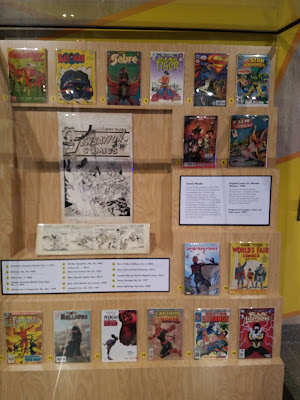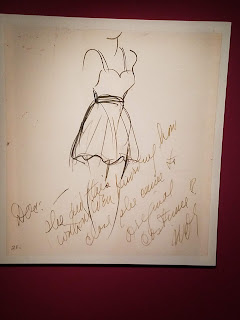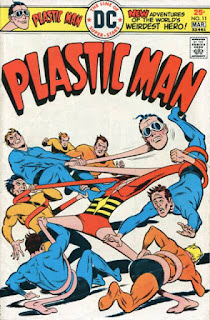Showing posts with label DC Comics. Show all posts
Showing posts with label DC Comics. Show all posts
Wednesday, August 17, 2022
Monday, June 28, 2021
NPR on superhero cartoon sex and Tuca & Bertie
A Censored Sex Scene In 'Harley Quinn' Sparks Debate On Depictions Of Female Pleasure
AILSA CHANG and Glen Weldon
NPR's All Things Considered June 22, 2021

'Tuca & Bertie' Is Beak TV Glen Weldon, Aisha Harris, Inkoo Kang
Pop Culture Happy Hour June 21, 2021
https://www.npr.org/2021/06/15/1006816792/tuca-bertie-is-beak-tv

Wednesday, February 19, 2020
March 7: Strange Adventures Signing w/ Tom King and Mitch Gerads at Fantom Comics
Update 3/4/20: Mitch Gerard won't attend due to illness.
MAR 7 2020
MAR 7 2020
- Saturday, March 7, 2020 at 6:30 PM – 8:30 PM
- Fantom Comics
2010 P St NW, 3rd Floor, Washington D.C. 20036
Tom King and Mitch Gerads reunite for Strange Adventures, telling the story of Adam Strange as a man of two worlds. We're happy to announce that Tom will be returning and Mitch will be here for the first time! Signing will follow a podcast discussion with Julian Lytle of IGNORANT BLISS. We ask that all attendees limit themselves to 2 items per person for signing with a possibility that the creators may have time to let folks back in line for other items.
Strange Adventures #1 will be released Wednesday, 3/4 and is available for pre-order at Fantom Comics now!
Friday, November 23, 2018
Exhibit review: Superheroes at the National Museum of American History
by Mike Rhode
Superheroes. Washington, DC: National Museum of American History. November 20, 2018 to September 2, 2019. http://americanhistory.si.edu/exhibitions/super-heroes
Superheroes. Washington, DC: National Museum of American History. November 20, 2018 to September 2, 2019. http://americanhistory.si.edu/exhibitions/super-heroes
The Smithsonian museum has mounted a small, but choice, exhibit made up of some extremely surprising pieces. The terse description on their website only hints at it:
This showcase presents artifacts from the museum's collections that relate to Superheroes, including comic books, original comic art, movie and television costumes and props, and memorabilia. The display includes George Reeves's Superman costume from the Adventures of Superman TV program, which ran from 1951-1958, as well as Halle Berry's Storm costume from the 2014 film X-Men: Days of Future Past.
 Of the five exhibit cases, two concentrate on comic books and original art, while the other three contain props from movies and pop culture ephemera. Surprisingly, the Black Panther costume from the Marvel movies which the African-American History museum collected this summer is not included, but as noted above they have displayed George Reeve's Superman costume (since it is in color rather than grey shades, it came from the later seasons of the television show), Halle Berry's Storm uniform, along with Captain America's shield, Wolverine's claws and Batman's cowl and a batarang. Those three cases are rounded out with the first issue of Ms. Magazine which had a Wonder Woman cover, two lunchboxes (Wonder Woman and Marvel heroes), and a Superman telephone.
Of the five exhibit cases, two concentrate on comic books and original art, while the other three contain props from movies and pop culture ephemera. Surprisingly, the Black Panther costume from the Marvel movies which the African-American History museum collected this summer is not included, but as noted above they have displayed George Reeve's Superman costume (since it is in color rather than grey shades, it came from the later seasons of the television show), Halle Berry's Storm uniform, along with Captain America's shield, Wolverine's claws and Batman's cowl and a batarang. Those three cases are rounded out with the first issue of Ms. Magazine which had a Wonder Woman cover, two lunchboxes (Wonder Woman and Marvel heroes), and a Superman telephone. |
| courtesy of Grand Comics Database |
The small exhibit lines two sides of a hallway off the busy Constitution Avenue entrance of the Museum, but the location has the advantage of being around the corner from a Batmobile from the 1989 Batman movie that was installed earlier this year. The car may be tied into the nearby installation and branding of a Warner Bros. theater showing the latest Harry Potter spin-off movie which seems like a true waste of space in the perennially over-crowded and under –exhibited (i.e. they have literally hundreds of thousands of items worthy of display in storage), but one assumes that besides the Batmobile, the theater came with a cash donation or promise of shared revenues.
Notwithstanding that cynicism, the Batmobile and the superheroes exhibit are fun to see, although most people quickly passed them by during this reviewer's visit. Also of interest may be a bound volume of Wonder Woman comics and a reproduction of an unused idea for her original costume, around the other corner from the Batmobile in the Smithsonian Libraries exhibit gallery. The museum has recently acquired some Marston family papers.
Bruce Guthrie has an extensive series of photographs including the individual comic books at http://www.bguthriephotos.com/graphlib.nsf/keys/2018_11_22D2_SIAH_Superheroes
(This review was written for the International Journal of Comic Art 20:2, but this version appears on both the IJOCA and ComicsDC websites on November 23, 2018, while the exhibit is still open for viewing.)
Bruce Guthrie has an extensive series of photographs including the individual comic books at http://www.bguthriephotos.com/graphlib.nsf/keys/2018_11_22D2_SIAH_Superheroes
(This review was written for the International Journal of Comic Art 20:2, but this version appears on both the IJOCA and ComicsDC websites on November 23, 2018, while the exhibit is still open for viewing.)
Thursday, September 20, 2018
Book Review: DC: Anatomy of a Metahuman
by Mike Rhode
DC Comics collects a lot of the comic books they've published, but they also have quite a few publications aimed at an adult audience looking for a gift or willing to spend larger amounts on material that interests them. The fact that these books even exist can be amazing especially for someone who grew up in the 1970s when there was one (or less!) collection of comics published per year (The Dark Knight Returns in 1986 started the modern trend of collecting a story arc in a book or "waiting for the trade"). Over the next week or so, I'll look at three of these I've been provided with recently.
DC Comics collects a lot of the comic books they've published, but they also have quite a few publications aimed at an adult audience looking for a gift or willing to spend larger amounts on material that interests them. The fact that these books even exist can be amazing especially for someone who grew up in the 1970s when there was one (or less!) collection of comics published per year (The Dark Knight Returns in 1986 started the modern trend of collecting a story arc in a book or "waiting for the trade"). Over the next week or so, I'll look at three of these I've been provided with recently.
DC: Anatomy of a Metahuman by S.D. Perry and Matthew K. Manning and illustrated by Ming Doyle (San Raphael, CA: Insight Editions, 2018; $50, ISBN 978-1-60887-501-6) comes out this week and is an in-depth look at twelve mostly major DC characters through the longstanding conceit of Batman researching the strengths and weaknesses of other heroes and villains (which on reflection also dates back to 1986's The Dark Knight Returns). The press release reads:
Concerned about the threat that so-called "metahumans" may pose to the world, Batman has begun compiling a detailed dossier on their incredible physiology and abilities. From villains like Killer Croc, Bane, and Brainiac to Batman's own comrades, including Superman and Cyborg, the file brings together the Dark Knight's fascinating personal theories on the unique anatomical composition of these formidable individuals.
This stunning and unique book delves into the incredible abilities of DC Comics characters like never before. Using beautifully illustrated anatomical cross sections depicting twelve different DC characters, the book, told from Batman's unique perspective, will explore how these metahumans' physical makeup differs significantly from that of the average person. From detailed theories on how Superman's eyes shoot heat rays to an in-depth exploration of how Aquaman is able to breathe underwater, the book delves into the deepest secrets of these classic characters. Also featuring chapters on the anatomy and abilities of Doomsday, Aquaman, Swamp Thing, Darkseid, Martian Manhunter, and more, this one-of-a-kind book will change the way you look at metahumans forever.
The authors Perry (a sf/fantasy novelization writer) and Manning (a comic book historian) do a good job at summarizing the powers and features of the characters in the book (Superman, Cheetah, Aquaman, Cyborg, Martian Manhunter, Swamp Thing, Darkseid, Bane, Doomsday, Killer Croc, Bizarro and Killer Frost), but run quickly into the major problem of the fact that these powers are impossible by our understanding of physics, chemistry and other sciences, so how can they be explained? On page 9, the second page of his dossier, Batman writes, "Much of my research has been focused on the composition of Superman's bones and muscles. What combination of organic structures could possible generate his immense strength? I have many theories but all are at odds with conventional scientific thinking." This difficulty with the human scientist Batman trying to understand impossible phenomena continues throughout the book. How can a woman become a were-cheetah?
The authors Perry (a sf/fantasy novelization writer) and Manning (a comic book historian) do a good job at summarizing the powers and features of the characters in the book (Superman, Cheetah, Aquaman, Cyborg, Martian Manhunter, Swamp Thing, Darkseid, Bane, Doomsday, Killer Croc, Bizarro and Killer Frost), but run quickly into the major problem of the fact that these powers are impossible by our understanding of physics, chemistry and other sciences, so how can they be explained? On page 9, the second page of his dossier, Batman writes, "Much of my research has been focused on the composition of Superman's bones and muscles. What combination of organic structures could possible generate his immense strength? I have many theories but all are at odds with conventional scientific thinking." This difficulty with the human scientist Batman trying to understand impossible phenomena continues throughout the book. How can a woman become a were-cheetah?
Of course, the suspension of disbelief is a major requirement in enjoying superhero comic books (and television and movies, fans of which the characters of this book seem to have been selected for). Once one decides to accept the internal logic of the book, the writing is concise and seems to reflect the current DC Universe of the comics (they've had so many reboots recently that I can't tell). Ming Doyle's semi-scientific illustration is a good match and very well done. Her illustration of Superman as Leonardo da Vinci's Vitruvian man has an underlying layer of amusement since on the same page Batman specifically notes that Superman is not and never will be human.
Sunday, January 14, 2018
DC in D.C. in photos (UPDATED)
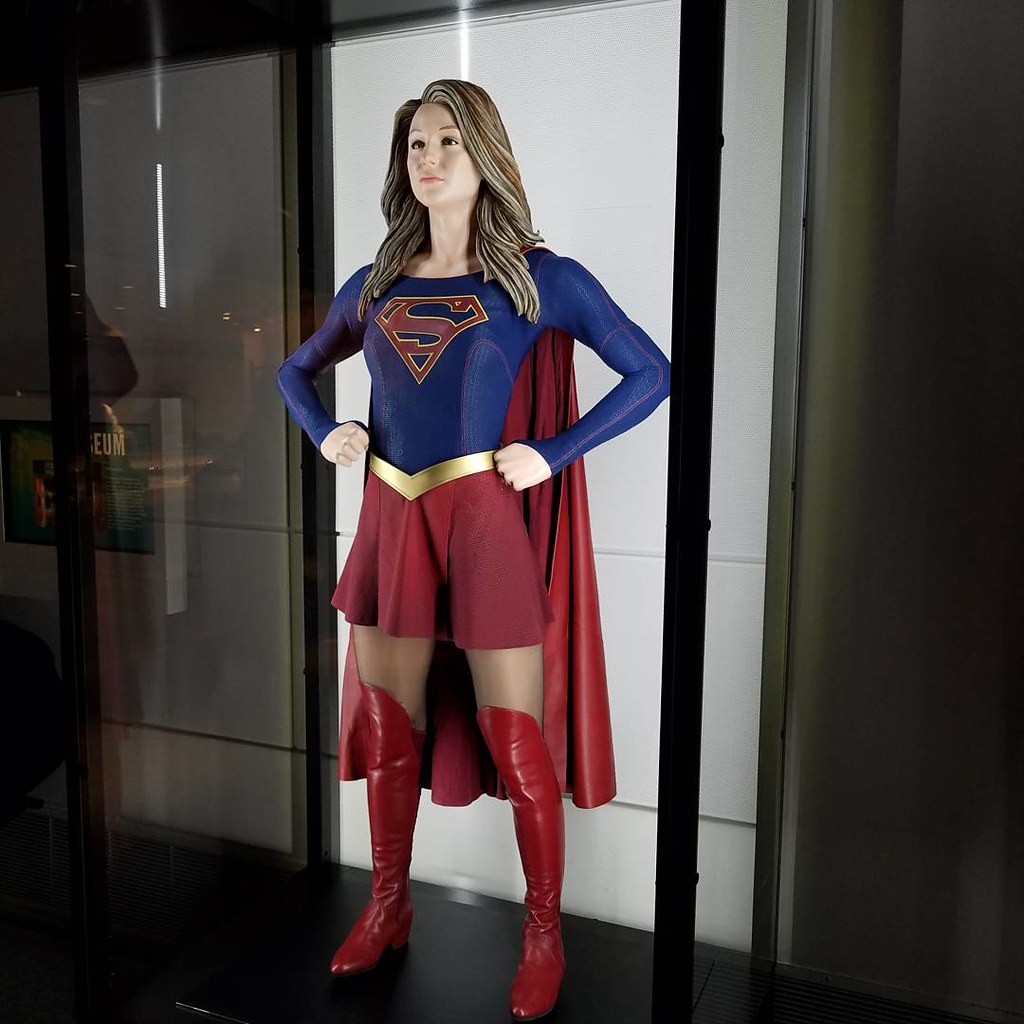
Here's my pictures, unsorted, unedited and barely captioned, theoretically, as Flickr seems to be having a problem arranging them:
http://www.bguthriephotos.com/
http://www.bguthriephotos.com/graphlib.nsf/keys/2018_01_13A_DC_In_DC
http://www.bguthriephotos.com/graphlib.nsf/keys/2018_01_13B_Art_Matter
http://www.bguthriephotos.com/graphlib.nsf/keys/2018_01_13C_Shades
http://www.bguthriephotos.com/graphlib.nsf/keys/2018_01_13D_Wonder
http://www.bguthriephotos.com/graphlib.nsf/keys/2018_01_13E_Pride
http://www.bguthriephotos.com/graphlib.nsf/keys/2018_01_13F1_Aftermath
http://www.bguthriephotos.com/graphlib.nsf/keys/2018_01_13A_DC_In_DC
http://www.bguthriephotos.com/graphlib.nsf/keys/2018_01_13B_Art_Matter
http://www.bguthriephotos.com/graphlib.nsf/keys/2018_01_13C_Shades
http://www.bguthriephotos.com/graphlib.nsf/keys/2018_01_13D_Wonder
http://www.bguthriephotos.com/graphlib.nsf/keys/2018_01_13E_Pride
http://www.bguthriephotos.com/graphlib.nsf/keys/2018_01_13F1_Aftermath
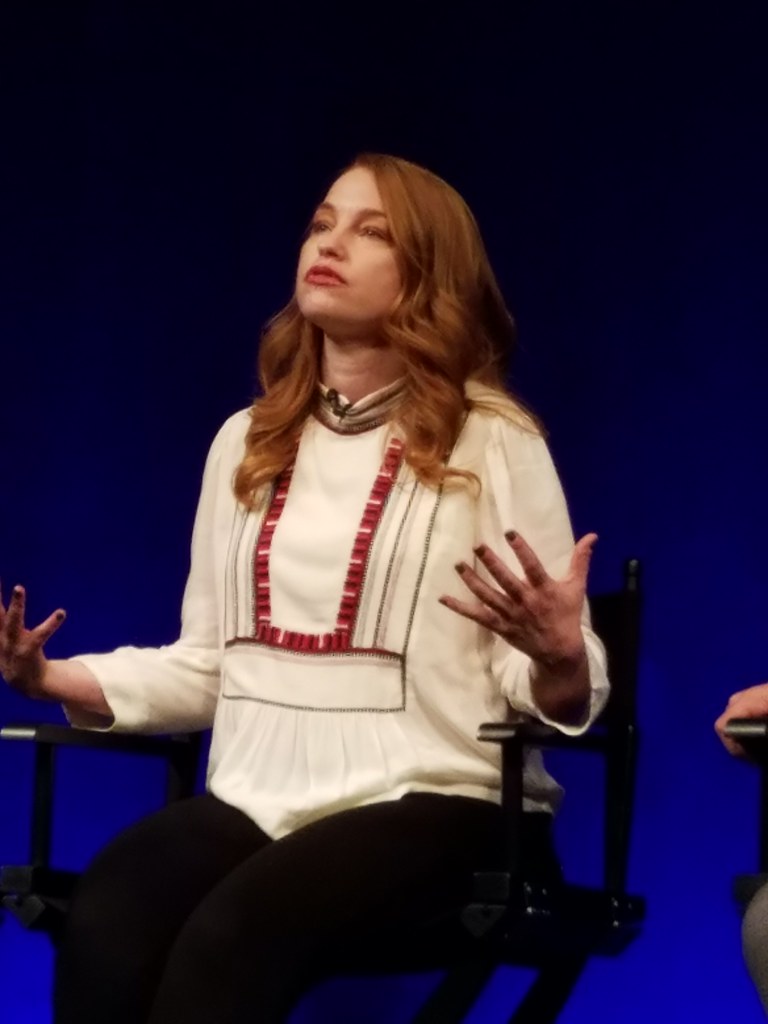 |
| Sarah Schechter (executive producer, Arrow, Black Lightning, DC’s Legends of Tomorrow, The Flash, Supergirl, upcoming Titans) - [who was very impressive to listen to] |
"DC IN D.C." 2018 PANEL PHOTOS (SAT, JAN 13)
THE ART OF THE MATTER: FROM SKETCH TO SCREEN panel photos: https://www.facebook.com/pg/wa
Participants include executive producers Greg Berlanti and Sarah Schechter (Arrow, Black Lightning, DC's Legends of Tomorrow, The Flash, Supergirl), Black Lightning executive producer Salim Akil and star Cress Williams, DC's Legends of Tomorrow stars Caity Lotz and Brandon Routh, The Flash star Danielle Panabaker and DC Entertainment's Geoff Johns.
THE MANY SHADES OF HEROISM: DC HEROES THROUGH THE AFRICAN-AMERICAN LENS panel photos: https://www.facebook.com/pg/wa
Participants include Black Lightning executive producers Salim Akil and Mara Brock Akil with star Cress Williams, Oscar®-winning screenwriter/comic book writer John Ridley, The Flash star Candice Patton, Supergirl star David Harewood, Gotham star Chris Chalk, DC Entertainment comic book artist Denys Cowan and writer Alice Randall, and Black Girl Nerds founder/editor-in-chief Jamie Broadnax.
WONDER WOMEN panel photos: https://www.facebook.com/pg/wa
Participants include executive producer Sarah Schechter (Arrow, Black Lightning, DC's Legends of Tomorrow, The Flash, Supergirl); DC's Legends of Tomorrow star Caity Lotz; The Flash stars Candice Patton and Danielle Panabaker; Gotham stars Erin Richards, Camren Bicondova and Jessica Lucas; DC Entertainment comic book writers Julie Benson, Shawna Benson, Shea Fontana and Mariko Tamaki; and comic book artist Agnes Garbowska.
THE PRIDE OF DC: THE ART OF LGBTQ INCLUSION panel photos: https://www.facebook.com/pg/wa
Participants include executive producer Greg Berlanti (Arrow, Black Lightning, DC's Legends of Tomorrow, The Flash, Supergirl), Freedom Fighter: The Ray star Russell Tovey and DC Entertainment comic book writers Vita Ayala, Marguerite Bennett, Steve Orlando and Mark Russell.
THE AFTERMATH: BATTLE & TRAUMA IN COMICS panel photos: https://www.facebook.com/pg/wa
Participants include former U.S. Surgeon General Dr. Vivek Murthy; DC Entertainment comic book writer/former CIA counter-terrorism operations officer Tom King; Gotham recurring guest star J.W. Cortés, a 13-year Marine combat veteran and a police officer with the New York Metropolitan Transportation Authority; comic book artist Mitch Gerads; and DC All Access host Jason Inman, an Operation Iraqi Freedom veteran; and Melissa Bryant, Director, Political & Intergovernmental Affairs, Iraq & Afghanistan Veterans of America.
"DC IN D.C." 2018 SIGNING PHOTOS (SAT, JAN 13)
Black Lightning series stars Cress Williams, China Anne McClain and Nafessa Williams signed for autographs for fans at the Newseum: https://www.facebook.com/pg/wa
Saturday, January 13, 2018
D.C. in DC - DC President Diane Nelson
Ms. Nelson is having a trivia question prior to the opening of the panels. She is noting that today's events are emblematic of America's values.
Monday, November 13, 2017
Book Review - Slugfest: Inside the Epic, 50-year Battle between Marvel and DC
reviewed by Mike Rhode
There are a lot of comic book studies and histories coming out these days, as movies based on them have become a multi-billion dollar business and the academic world has accepted them as a legitimate field of study. I would estimate 40-50 prose books about comic books are published per year now, and there's at least five academic journals covering the field.
Slugfest is aimed at a popular audience who have some basic knowledge about the fact that there are two major publishers of superheros comics, and are curious about the history of how they interacted over the years. Tucker is a journalist from New York City and writes a breezy story running from the 1930s up until the present. He frames the story as an ongoing "war" (his term) between the companies, beginning in earnest in the 1960s as "DC represented Eisenhower's America, Marvel ...like John F. Kennedy's." (p. xix) He concludes his introduction by stating, "This is the story of the fifty-year battle between the two companies - some of it driven by DC's desire to copy Marvel, some of it driven by Marvel's desire to copy DC, and some of it - the most fun stuff, let's be honest - driven by pure gamesmanship and spite." (p. xx) If that sounds appealing, you'll probably enjoy the rest of the book. I did.
Slugfest: Inside the Epic, 50-year Battle between Marvel and DC
by Reed Tucker, Da Capo Press, 2017. $27.00
There are a lot of comic book studies and histories coming out these days, as movies based on them have become a multi-billion dollar business and the academic world has accepted them as a legitimate field of study. I would estimate 40-50 prose books about comic books are published per year now, and there's at least five academic journals covering the field.
Tucker cuts his take on the companies relationship into logical breaks. DC is the older company, having published Superman first in 1938, and the first chapter is "DC Becomes the Industry's Eight-Hundred-Pound Gorilla" and covers about a twenty-five year period. For the second chapter, "Mighty Marvel Comes Out Swinging," Marvel returns to its roots as a player in superhero comics, after chasing trends including romance, funny animals, westerns and science fiction from post-World War II until late 1961, when the Fantastic Four were created by Stan Lee and Jack Kirby.
Having laid the groundwork, Tucker writes about the initial competition on the newsstand, when DC controlled Marvel's distribution, through ongoing poaching of talent and storylines, event-driven sales such as The Death of Superman, both companies being absorbed into bigger corporations, revolving editor-in-chief seats during tough times, and the battle for television and movie dominance, ending in 2016 with sales at both companies markedly depressed.
He does this largely through the use of interviews rather than primary sources or archival research. The advanced copy I received has incomplete notes (and no index), but he seems to largely have worked from published interviews given to a wide variety of media outlets over the years. Thus, this is a very dialogue-driven book, and one that's intensely personal - there's no reviews of corporate annual reports studied for absolute bottom line earnings. As a result, one should probably think twice about accepting as absolute truth a story or interpretation presented by Tucker, but you can certainly enjoy hearing the story.
I enjoyed this book much more than a lot of what I've read about superhero comics in the past few years. I may very well purchase a replacement hardcover to keep on my shelves. It's a fast read, and if you're curious about the history of the companies, this is a good place to start learning about fifty years of superhero publishing.
Monday, October 02, 2017
Ramona Fradon, a Baltimore Comic Con interview
 by Mike Rhode
by Mike RhodeRamona Fradon is a noted Silver Age artist who worked for DC Comics for years. Her Amazon description reads: Ramona Fradon is a legendary comic book illustrator known for her work on Aquaman, Metamorpho, Plastic Man and Super Friends. She also drew the newspaper comic strip, Brenda Starr and is noted for the humor in her drawings. In her serious moments, she wrote a book about the Faust legend in relationship to Gnostic mythology. In 2006 she received the prestigious Eisner Lifetime Achievement award. She lives in upstate New York in a very old house with a very old dog. She's been at the Baltimore Comic Con for the past few years, and we conducted this interview via e-mail.
I worked in comic books, mostly for DC, drawing Aquaman, Plastic Man, Super Friends and stories in House of Mystery and House of Secrets, I co-created Aqualad and Metamorpho and also illustrated the syndicated newspaper strip, Brenda Starr.
How do you do it? Traditional pen and ink, computer or a combination?
How do you do it? Traditional pen and ink, computer or a combination?
I never worked with a computer and for most of my career, I inked with a #7 brush. Lately I have been using Micron felt pens.
When working in comic books, you probably didn't get to do your own inks very often. Would you have preferred to? Did you have a favorite inker?
When working in comic books, you probably didn't get to do your own inks very often. Would you have preferred to? Did you have a favorite inker?
I inked Aquaman and the mysteries and Brenda Starr, which was quite enough for me. I do a tight penciling and have always felt that inking was redundant. I don't really have a favorite inker although I admire many of them.
When (within a decade is fine) and where were you born?
When (within a decade is fine) and where were you born?
I studied design at Parsons School of Design and fine art at the Art Students' League in NY. I never studied cartooning specifically, although I was influenced by the great newspaper comics I read when I was growing up.
If you could, what in your career would you do-over or change?
If you could, what in your career would you do-over or change?
I would have written and drawn children's' books or done book illustrations.
 What work are you best-known for?
What work are you best-known for?
 What work are you best-known for?
What work are you best-known for?
Probably Aquaman and Metamorpho.
What work are you most proud of?
What work are you most proud of?
Besides the children's book I wrote (THE DINOSAUR THAT GOT TIRED OF BEING EXTINCT which is on Amazon) I would say Metamorpho.
What would you like to do or work on in the future?
What would you like to do or work on in the future?
That's a funny question for someone who is ninety-one (as of today, October 1st).
 What do you do when you're in a rut or have writer's block?
What do you do when you're in a rut or have writer's block?
 What do you do when you're in a rut or have writer's block?
What do you do when you're in a rut or have writer's block?
I clean the house or take a vacation or catch up on reading until I feel like working again.
What do you think will be the future of your field?
What do you think will be the future of your field?
It seems as if Hollywood is determining it right now, but I expect it will have a lot to do with the internet in ways I can't imagine.
How was your BCC experience this year? How often have you attended it?
I think I have been there about five times. It's getting bigger, but thankfully, not overwhelmed by TV and Hollywood. Brad Tree and his staff do a great job and make being there a pleasure. They gave me the biggest table (actually two tables) I have ever had.
What's your favorite thing about Baltimore?
I liked walking around the harbor and eating at a seafood restaurant that overlooks the water.
Least favorite?
Least favorite?
Wednesday, June 07, 2017
Meet a Richmond Comics Writer - A Chat with Gary Cohn
 |
| Mark Lindblom (l) and Gary Cohn |
Gary Cohn co-wrote two of my favorite 1980s DC Comics, Blue Devil and Amethyst, Princess of Gemworld. I recently got to meet him at Heroic Aleworks Brewery's minicon, and he answered my usual questions.
What type of comic work or cartooning do you do?
A: I’m a writer. I work with artists.
How do you do it? Thumbnails? Traditional pen and ink, computer or a combination?
A: I work in either of the standard comics writing styles. I can write full scripts when I don’t know or don’t trust the artist; I write plot/dialogue when I trust the artist and when we’re full collaborators. I’m happiest when I can give an artist an outline, and then the artist throws me some visual surprises that I need to integrate into my original conception of the story. In the early part of my career when I was writing stories and often didn’t know who would draw them, I did thumbnail sketches of pages to accompany my scripts. They were the crudest of cartooning, and I was disappointed when some artists chose to follow my thumbnail layouts completely instead of taking them for the suggestions they were meant to be. I assumed that an artist would have a better visual imagination than I have, and would be able to take my suggestions and run with them, not just follow them slavishly.
When (within a decade is fine) and where were you born?
A: I was born in NYC in 1952—I’m a child of the 50s and 60s, and all the pop culture of that era.
Why are you in Richmond now? What neighborhood or area do you live in?
A: It took me twenty years to realize that I wasn’t going to make a living writing. So I became a NYC high school English/social studies teacher and did that for 14 years. When I retired I realized that a “short” pension was not going to keep me going in NYC, and after 30 years there I wanted a change of venue. I had an artist friend living in RVA (ie Richmond, VA), I’d visited her a number of times over the years, and when I was considering new places I narrowed it down to RVA and St. Petersburg, FL. I wanted someplace a lot cheaper than NYC, warmer, with some history and culture and a creative community. Since my 90-year-old mom still lives in NY, I decided on the place where I could get to NY more quickly and easily. Roads not taken… I still wonder about St. Pete. I live in the oldest neighborhood in RVA, Church Hill. It’s been a very good move.
What is your training and/or education in cartooning?
A: Choose-your-own-major BA degree from Michigan State (defunct residential Justin Morrill College allowed us to design our own major: mine was creative writing/science fiction and fantasy lit); MA from the Department of Popular Culture at Bowling Green State in Ohio; course work completed towards a doctorate in US History (US naval history, esp 1880-1900). Basic teaching certification courses from NYS.
Who are your influences?
 |
| courtesy of the Grand Comics Database |
A: Amethyst would have been developed as a toy line by Kenner when they were planning to do it, BEFORE She-Ra came out, and I’d have made a fuck-ton (that’s a technical term) of money; and spent most of it on motorcycles, adventuring, and wild women. There’s been a fair amount of all three in my life, but I’ve never really been able to afford to fully indulge myself.
What work are you best-known for?
A: Amethyst and Blue Devil from DC in the early ‘80s. My standard line is that for a short while I was a little bit famous and successful in a relatively obscure pop sub-culture.
What work are you most proud of?
A: Demon Gun, published by Crusade about 20 years ago, which is the only piece of my published work that I actually own--well, co-own with artist Barry Orkin. I understand that there are comics writers who claim sole ownership over properties. I’ve always believed that anything I create in comics is co-created by the artist, because I can’t make comics without one. If I wanted sole ownership, I’d write prose exclusively.
What would you like to do or work on in the future?
 |
| courtesy of the Grand Comics Database |
What do you do when you're in a rut or have writer's block?
A: I’ll tell you when I’ve solved that problem. While I was a teacher I wrote very little. Since I’ve been on my own I’ve been struggling to find the old mojo. A deadline and a paycheck were always good incentive. Right now I have neither from writing.
What do you think will be the future of your field?
A: No idea.
What local cons do you attend? The Small Press Expo, Intervention, or others? Any comments about attending them?
A: Until I have something to peddle, some new wares to spread out on a table, I’m staying close to home. Any Con in Richmond that will let me in for free, I’m there. Beyond that, I went to the Baltimore Con last fall and liked it, I stopped in at Tidewater this year to see Paris and a few other folks and because it made a nice motorcycle run, I’ll probably head down to some other Cons in VA and NC in the next year, and if one of Mike Carbonaro’s NYC cons is going on when I’m visiting, or Eternal Con on Long Island, I try to stop in to schmooze with old industry buddies.
What's your favorite thing about Richmond?
A: Hard to say. It’s a very nice small city. I’ve met a lot of great people, I’ve connected with the thriving comics community here, found the perfect motorcycle shop and car repair place, discovered terrific restaurants… I’m thinking the answer is, my apartment and neighborhood. It’s a great space in a great location.
Least favorite?
A: The wannabe Confederates. I’m a carpetbagger Yankee.
What monument or museum do you like to take visitors to?
A: The VMFA (Virginia Museum of Fine Arts) is a very good small-city art museum; then there’s Monument Ave (or as we carpetbaggers like to call it, “Losers’ Lane”) with all the ridiculous Confederate statues and one very badly designed but well-intentioned Arthur Ashe statue.
How about a favorite local restaurant?
A: This town is full of very good restaurants; but Lemaire in the Jefferson Hotel is an amazing experience and a world-class dinner. I let a visiting stockbroker friend pay for it.
Do you have a website or blog?
A: Nope.
Subscribe to:
Posts (Atom)



